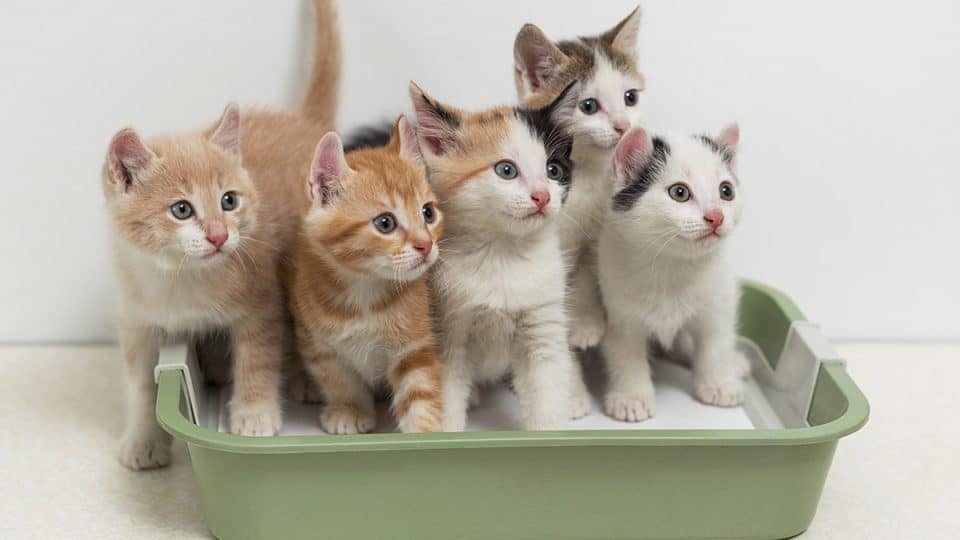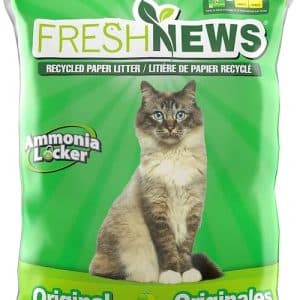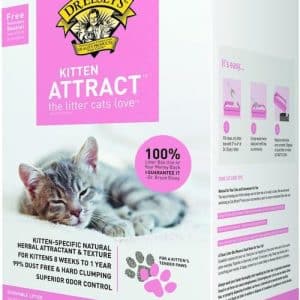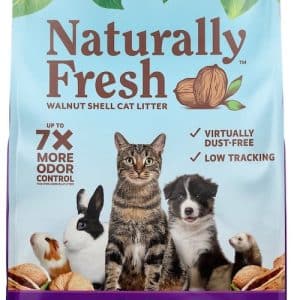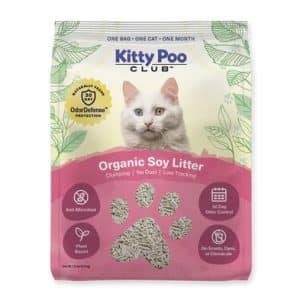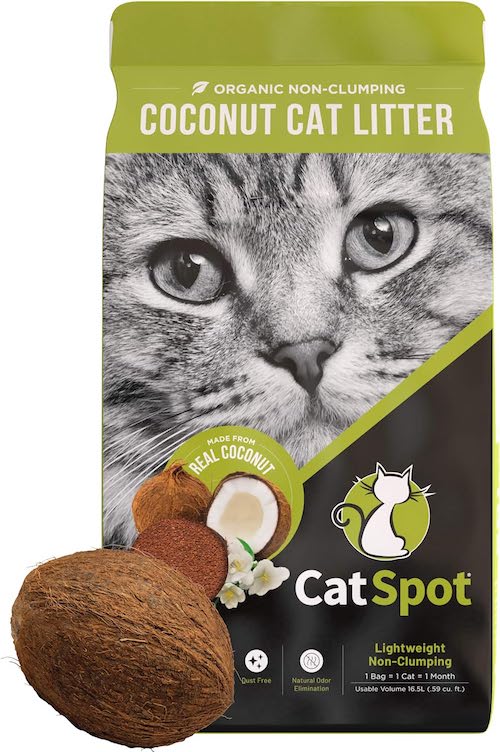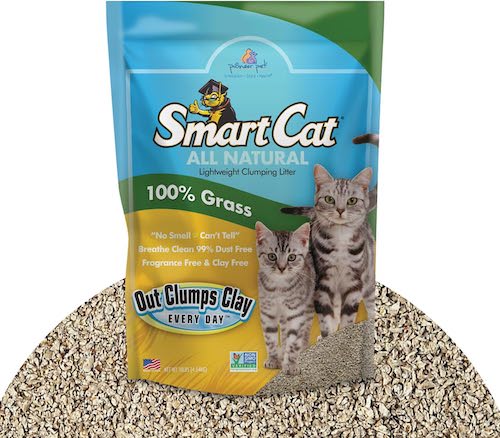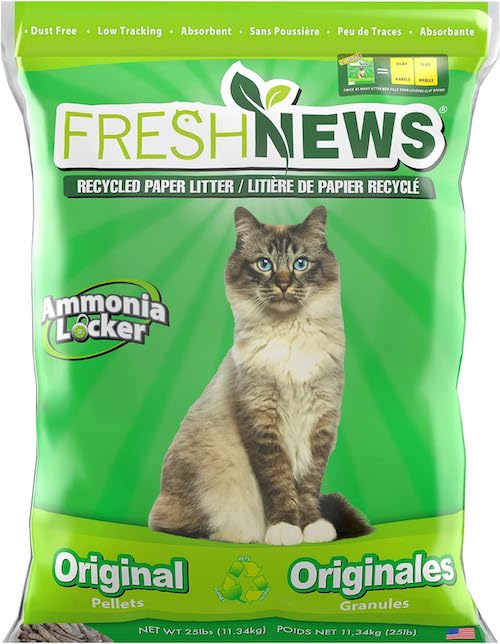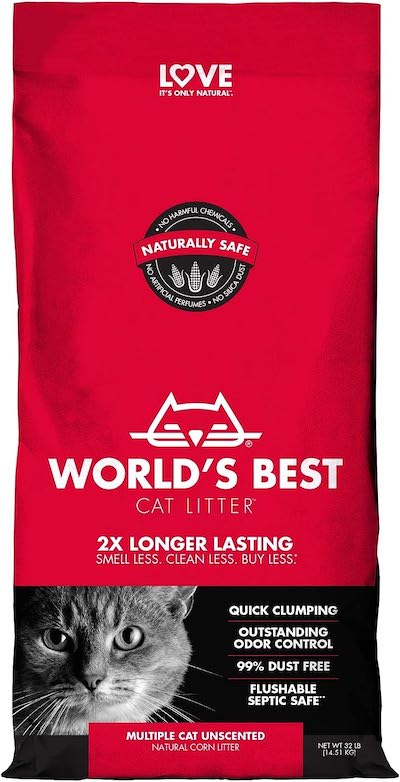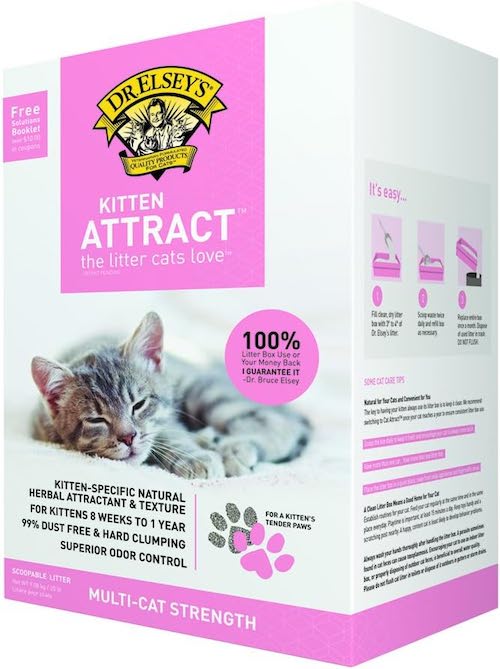- This review contains affiliate links. Read more here.
- Not a substitute for professional veterinary help.
Kittens rely on their moms to keep them clean for the first few weeks of their lives and quickly learn from them how to use a litter box. For many kittens, any type of cat litter is perfectly safe. However, if you notice your little friend rolling in the litter and then licking their fur, or nibbling at the litter as if it were kibble, you may want to switch to a type of litter that won’t cause problems if it’s ingested.
To help you make an informed decision, we’ve asked veterinarian Dr. Brad Hinsperger what pet parents should prioritize when selecting a litter for their kitten. For details on the types of litter best suited for kittens and how to encourage litter box use, jump to our explainer below. Otherwise, read on for our top 8 litter recommendations for your tiny furball.
Our picks
Best Non-Clumping Litter: CatSpot Coconut Litter
According to Dr. Hinsperger, director of Kingsdale Animal Hospital, non-clumping litter will be the best option for many young kittens. “Unlike clumping litter, non-clumping litter poses less risk if ingested, which can occur as kittens often explore their surroundings with their mouth,” he explains. Hinsberger adds that non-clumping litters are usually less dusty, which makes them gentler on a kitten’s sensitive respiratory system.
With this non-clumping kitten-friendly litter, you scoop every day to remove solid waste and then stir the remainder, which absorbs urine. Depending on the number of cats using the litter, you will need to replace it every few weeks. The highly absorbent material is 100% coconut fiber—no perfumes, no clay. CatSpot litter is also low-dust, which kittens (and humans) with allergies or asthma will appreciate. It’s pricey, but it can be worth it.
What we like:
- Super soft for sensitive kitten paws
- Highly absorbent
- Made with only one component
- Low-dust
Things to consider:
- The dark brown color can make it tricky to spot solid waste
- Because it’s lightweight, it tends to track and scatter more
Best Clumping Litter: SmartCat All Natural Grass Clumping Litter
If you prefer a clumping formula, this natural SmartCat litter is a good one to consider. Made entirely from grass, it forms firm clumps for easy scooping. We’ve used this with our own cats and can personally vouch for its impressive clumping ability. The smooth, sandy texture is gentle on kittens’ paws—a big win, as many kittens prefer clumping litters with a fine-grain texture, Dr. Hinsperger tells us. It’s also free of scents and chemicals.
What we like:
- Fast clumping action helps seal odors
- Kitten-friendly texture
- Low-dust
Things to consider:
- Tends to track
Best for Odor-Control: Feline Pine Platinum Non-Clumping Litter with Baking Soda
The secret of Feline Pine is highly absorbent pine fibers. This material soaks up liquid on contact, trapping ammonia odors in the process. Most experts, including Dr. Hinsperger, advise against scented litters because they can irritate a kitten’s sensitive sniffer. Rather than relying on harsh chemicals or artificial scents to cover up bad smells, this litter incorporates baking soda to neutralize odors. The lightweight pellets are clay-free, perfume-free, and kitten-friendly.
What we like:
- Eco-friendly: pine shavings are reclaimed from lumber production companies
- Low-tracking
- Long-lasting
- Pellet style is less likely to get stuck in long fur
Things to consider:
- Some cats and people won’t like the natural pine smell
Best Low-Dust: Fresh News Unscented Non-Clumping Paper Litter
To minimize respiratory issues, Dr. Hinsperger advises kitten guardians to opt for a low-dust formula. Generally, paper pellets tend to create less dust than other litter types, and they usually track less than fine-grain particles. Plus, they’re softer than clay.
Fresh News is made with 100% post-consumer paper from recycling centers. The pellets are designed to hold their shape, which helps keep dust under control. This litter would be a safe option for kittens who’ve been recently spayed or neutered.
What we like:
- Contains baking soda to neutralize odors
- Eco-friendly
- Reasonably priced
Things to consider:
- Paper isn’t the best for odor control
- Pellets get soggy and can be harder to clean
Best for Multiple Kittens: World’s Best Multi-Cat Unscented Clumping Corn Litter
If you have more than one kitten at home (lucky!), you’ll want a litter that can keep up with their high demands. This corn litter is easy to clean, it controls odors well, and it’s made with safe, natural materials. The quick-clumping action simplifies scooping after multiple kittens—plus, the solid clumps lock in odors.
A word of caution: Corn-based litter is susceptible to mold if it’s not stored properly. Make sure to keep it in a cool, dry location, and scoop frequently to avoid moisture from accumulating.
What we like:
- Free from artificial fragrances & harsh chemicals
- Made with renewable resources
- Flushable (for well-maintained plumbing systems)
Things to consider:
- Pricier option
- It’s unscented, but the natural corn smell may be off-putting to some
Best for Training: Dr. Elsey’s Kitten Attract Litter
There are several strategies for getting your kitten on board with using their litter box. And choosing the right litter is a major step in the right direction. Dr. Elsey’s features a kitten-specific herbal attractant designed to entice hesitant felines. Plus, the granules are comparable to beach sand, which many kittens will like. However, this clumping clay litter won’t make a good choice for kittens with a habit of eating their litter.
What we like:
- Ideal size and texture for delicate kitten paws
- Affordable option
- Excellent odor control
Things to consider:
- Very fine particles mean this may track a bit
Best Pellet Style: Naturally Fresh Non-Clumping Walnut Shell Litter
As we’ve noted, texture is a major factor when it comes to kitten comfort. Soft and gentle is usually better. “The texture of the litter should also be easy to dig as kittens are still getting used to this new experience,” points out Dr. Hinsperger.
You’ll get amazing odor control from this natural litter made of walnut shells. It’s a lightweight litter that will make it easier for most kittens to dig and bury their deposits. The pellets are a bit larger than most litters, so if you are introducing your kitten to this litter, transition them gradually from their usual stuff.
What we like:
- Unscented and low dust
- Pellets are less prone to tracking
- Less likely to get stuck in your kitten’s paws
- Great for long-haired kittens
Things to consider:
- Dark brown color can make it hard to find (and scoop) number twos
Best Subscription: Kitty Poo Club

Kitty Poo Club
In terms of convenience, a litter subscription is hard to beat. The Kitty Poo Club offers two plant-based litters that are kitten-friendly.
New kitten parents already have enough on their plate. You’re getting used to a new routine, and you have new responsibilities. A convenient litter subscription means one less thing to worry about—and prevents the need for emergency shopping trips when you’ve forgotten to pick up more litter.
With a subscription to the Kitty Poo Club, litter is delivered right to your door. The company offers two plant-based options that would work well for kittens: corn & wheat and a soybean formula. Our tester tried out the soybean litter with her cats and was impressed with its odor control, clumping, and scoopability.
What we like:
- Convenient timesaver
- Disposable boxes mean no more scrubbing down plastic bins
- Lightweight: easy to pour and carry
Things to consider:
- Large pellets may not sift easily through some scoops
Cat Litter for Kittens: The Basics
Most kittens quickly recognize cat litter and how to use it. If your little guy or gal isn’t sure, Dr. Hinsperger recommends focusing on strategic placement and positive reinforcement. “It’s good to place the litter box in a quiet but accessible location in the house,” he says, adding that treats, praise, and affectionate petting can help encourage litter box use. You also want to make sure the litter is in a litter pan with low sides (or at least with a low entry) so it’s easy for tiny kittens to get into the box.
Each kitten will have their own preferences, Dr. Hinsperger reminds us—and figuring out what your kitten prefers could take some experimentation. “We often advise having multiple boxes with different types of litter to see what the kitten prefers,” says Hinsperger. “For this test, making sure the boxes are close together removes box location as a factor.”
If you are concerned that the kitten may try to eat the litter or lick litter dust from their fur, fill the box with a kitten-safe litter. There are several types that you can try:
- Plant-based pellets: These include pellets made of pine, walnuts, coconut shells, or paper. (But be careful with wheat or corn pellets, which can develop aflatoxin mold if stored improperly.)
- Non-clumping clay litter: While most clay litter is clumping (made of sodium bentonite), there are still some traditional sandy litters (made of calcium bentonite) on the market. You’ll have to change the litter more often if you opt for an old-school litter.
- Unscented litters: As Dr. Hinsperger explains, strong perfumes and deodorizing chemicals can irritate kittens or make them want to avoid the box. Stay with an unscented litter, and if you are concerned about litter box smell, look for a litter with baking soda to reduce odor.
How We Chose
The litters featured here were selected based on a combination of our own hands-on testing, a comprehensive look at customer reviews, and an interview with Dr. Brad Hinsperger. We prioritized products that are free of artificial fragrances and harsh chemicals that could cause problems if ingested. Additionally, we looked for litters with soft textures that are gentle on tender kitten paws. We’re also guided by the experience of living and playing alongside our own much-loved and strongly opinionated cats, who are never stingy with their feedback.
